The tasty citrus flavor and gentle character of this abundant and easy-to-grow herb make lemon verbena perfect for the entire family to enjoy as an infusion.
Kids and elders alike can benefit from the bright personality of this cheerful plant.
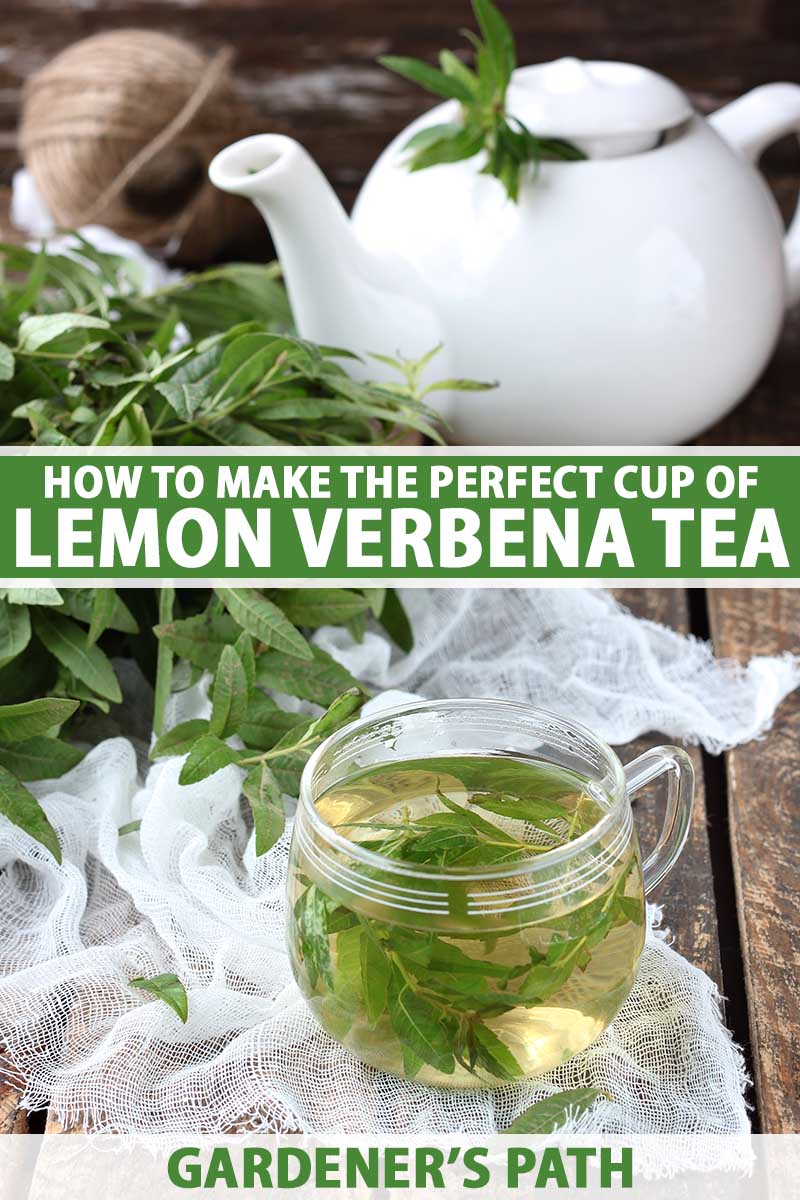
We link to vendors to help you find relevant products. If you buy from one of our links, we may earn a commission.
Lemon verbena (Aloysia citriodora) is highly aromatic because the plant’s glandular trichomes, where the essential oils live, are located on the external parts of the herb.
This makes them perfect for infusing at different water temperatures since the aromatics are easily released.
Because this perennial plant thrives in the heat, providing a steady source of a delightfully fragrant herb that can be used in many ways, this makes it a real garden gem!
One of the best ways to experience the flavor of this healing plant is by enjoying a cup of tea, either cool or warm.
Here’s what this guide will cover:
How to Make Lemon Verbena Tea
Natural Ingredients
When using natural ingredients like herbs in our remedies, it’s important to know how they are grown so that we are helpful and not harmful in our practice.
If you’re interested in adding an inspiring guide to herb gardening and crafting herbal remedies to your bookshelf, “The Healing Garden” by Deb Soule is a phenomenal book!

The author does a fantastic job of combining her passion for gardens and extensive experience working with medicinal plants. And it’s filled with colorful photographs as well.
Brewing a cup of herbal tea is empowering, especially if you also grew the plant yourself! You can find instructions for doing so in our guide.
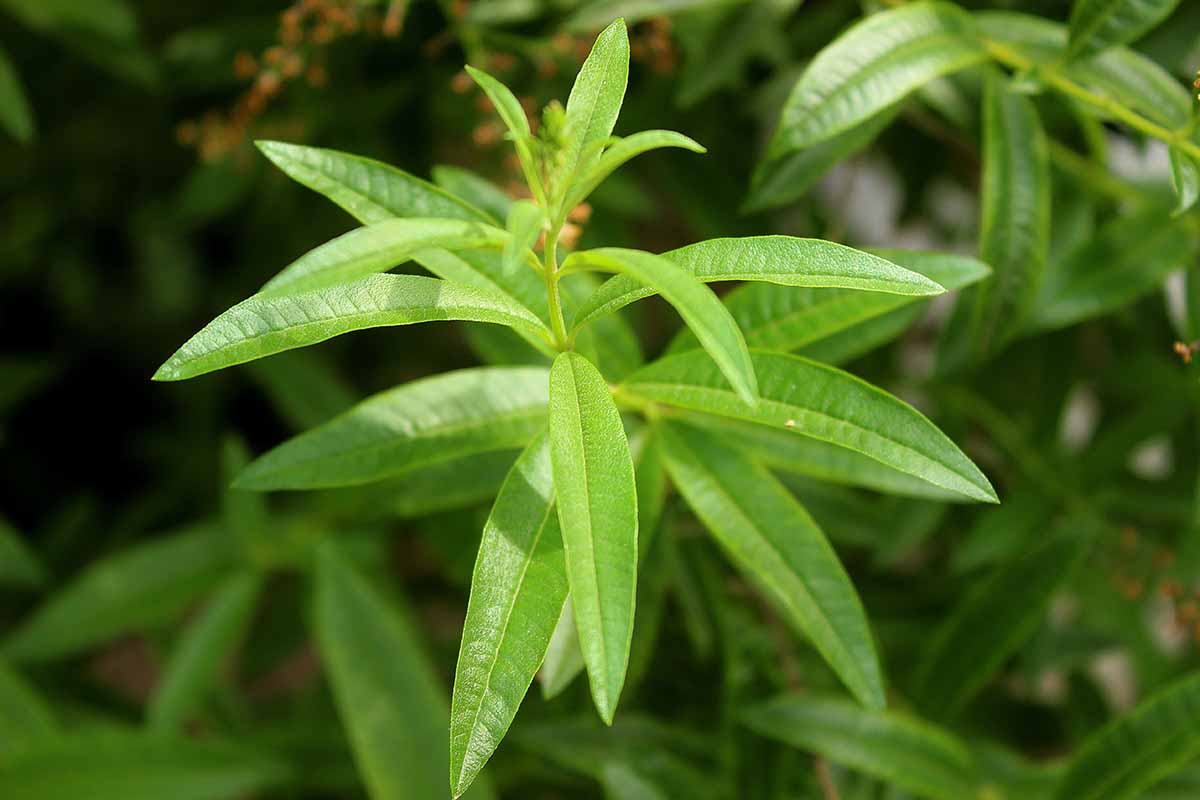
Many herbalists say the best way to experience the traditional ways of herbalism is by preparing yourself and others a cup of herbal tea – even better if it becomes a habit.
Lemon Verbena
A. citriodora is a nervine and mild antidepressant that can help calm the mind, relax the body, and uplift your mood. It’s also considered an anxiolytic, which may help alleviate anxiety.
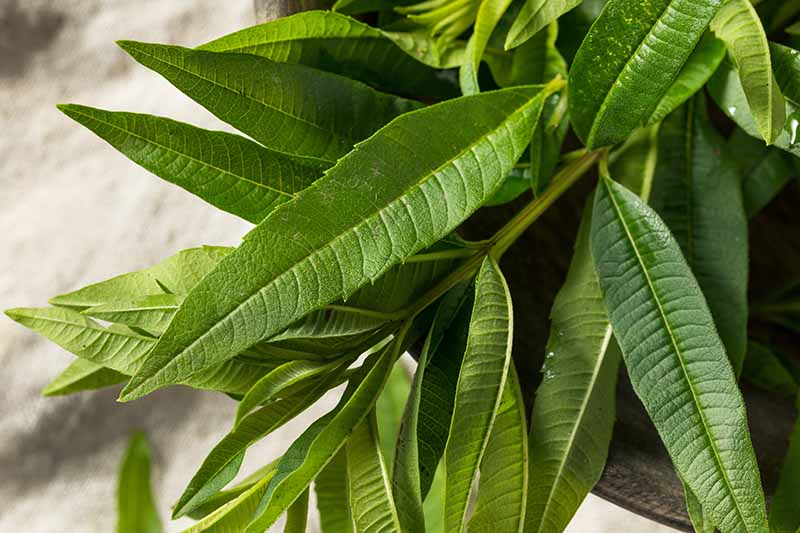
The nervine actions might make it an appropriate ally for treating insomnia when paired with other calming herbs that suit your personal needs.
The herbal tea is commonly consumed to help support digestive discomfort like indigestion and bloating. It makes a perfect after-dinner tea!
According to a research article published in the Journal of Food Science and Technology International, lemon verbena infusions steeped for six minutes at 194°F (90°C) have the highest level of bioactive compounds available, without having a bitter taste.
When your aim is to brew a premium cup of lemon verbena tea, this is important.
Water boils at 212°F, so keep this in mind when making hot infusions, and allow the water to cool just a bit before adding your herbs. We’ll touch on this again a bit later, in our warm infusion instructions.
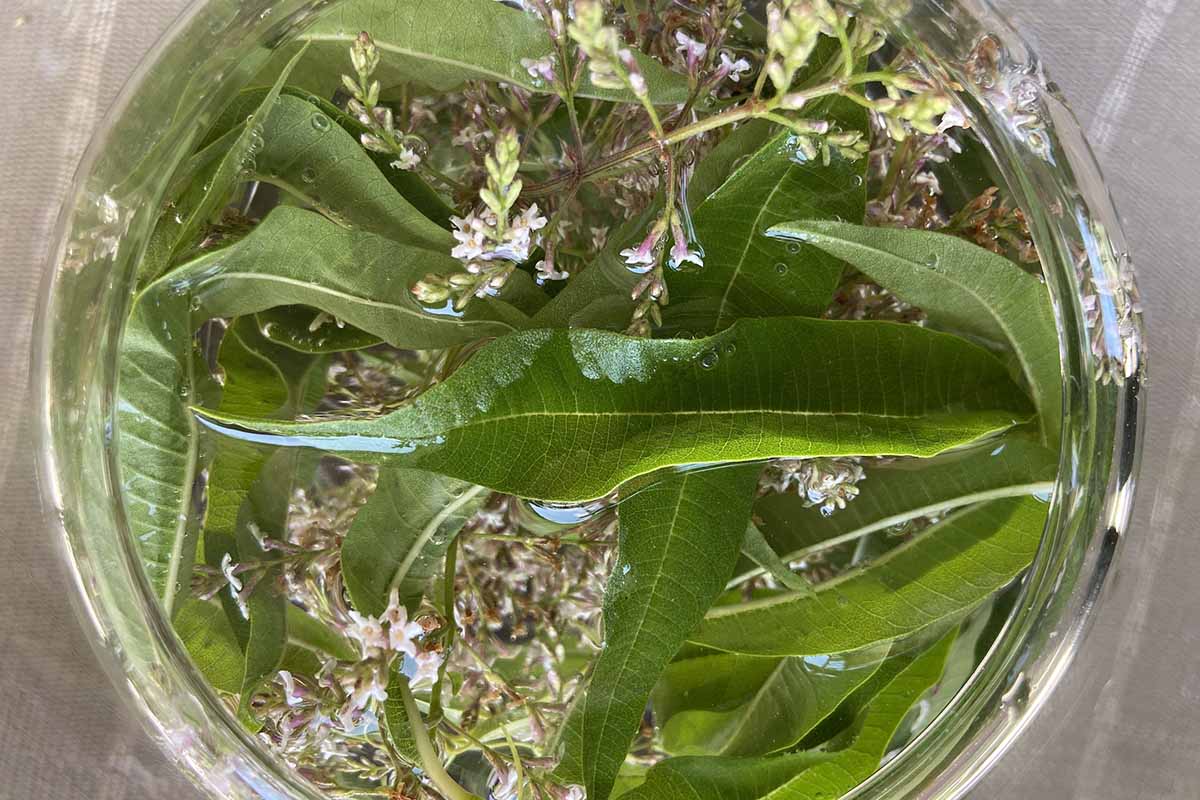
Among the many healing plant compounds found in this aromatic herb’s leaves are antioxidants that can help protect against free radicals, and which may help to boost the immune system.
Including this herb in a cold-prevention herbal infusion blend could be helpful during cold and flu season.
Recipe for Lemon Verbena Tea
Like lemon balm, I also enjoy warm cups of lemon verbena tea when I want to benefit from the plant’s healing actions, and I enjoy drinking a cold infusion during the summertime to help me chill out.

When the herb is in flower, I harvest a few blooms to add to my infusion. They have a milder flavor than the leaves and a subtle floral taste. The next time yours are in flower, try a nibble!
For this herbal tea, we will make things simple to highlight the lovely citrusy flavor of this herb.
Below are two approaches that you can take to make your infusion.
Cold Infusion Instructions
Infusing water with aromatic herbs is a wonderful way to encourage good hydration, especially during the summertime. And it couldn’t be easier to prepare!
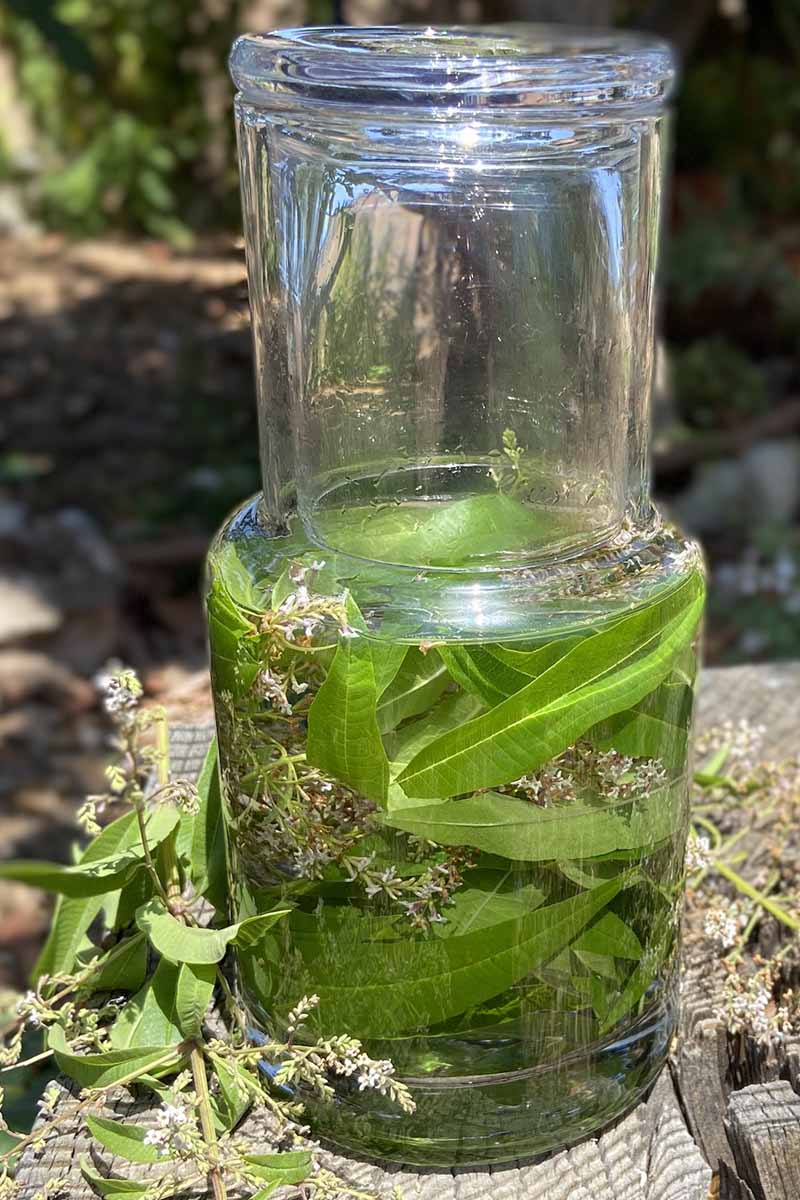
For this cold infusion, I recommend using fresh herbs.
Four four cups, you will need 20 to 30 lemon verbena leaves. Adding flowers is optional.
1. First, gently rinse your herbs.
2. Slap the herbs on your palm or a clean countertop to release their aromatics.
3. Place in a 32-ounce container that you can close with a lid.
4. Pour in four cups of natural spring water and close the container.
5. Infuse for at least four hours or up to overnight in the fridge. Some people opt to do a solar infusion throughout the day instead, and then place the container in the refrigerator to chill and continue steeping overnight.
6. Strain before enjoying, or leave the herbs in if you don’t mind consuming a few pieces. If desired, top with a fresh sprig.
You can store any leftovers in the refrigerator for one more night. This type of infusion is intended to be enjoyed fresh.
Warm Infusion Instructions
Below is a guide that includes time and temperature recommendations from the journal article referenced above, along with recommended measurements for using fresh or dried lemon verbena, to access the full spectrum of water-soluble healing actions in these herbs.
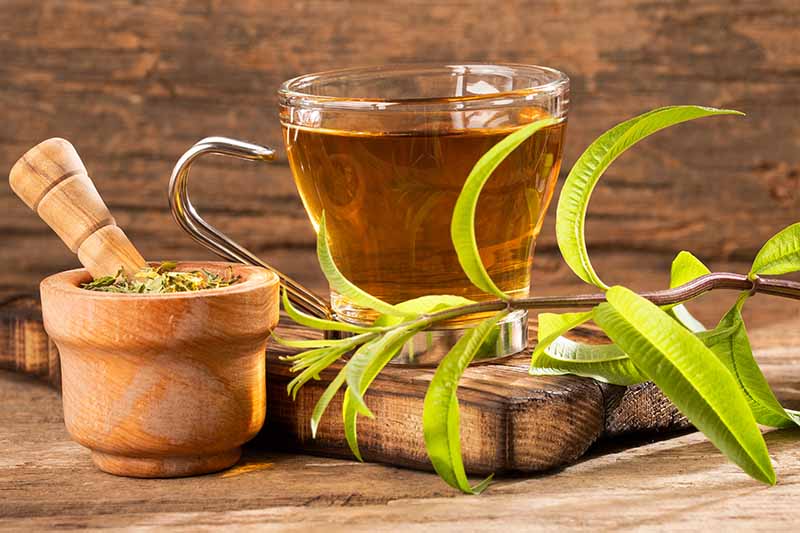
You can double or triple the ingredients to make additional cups of herbal tea. If you want to sweeten your infusion, add honey or your sweetener of choice to taste before serving.
To make one eight-ounce cup of warm tea, you will need two to three tablespoons of dried herbs, or four to six grams of fresh, which is about four to six big sprigs.
If you have a kitchen scale, you can use it to weigh your herbs if you like. Rinse fresh herbs under cool water before using.
1. Fill a kettle or saucepot with water for however many cups you will be infusing, place it on the stove, and turn on the heat.
2. Place your herbs into a heat-safe container that can be closed with a lid.
3. When the water reaches a boil, turn off the heat. To ensure maximum extraction of the herbal constituents, use a digital or candy thermometer to determine when your water is at 194°F/90°C, and pour the water over your herbs. Place the lid on top.
4. Allow your tea to infuse for six minutes.
5. Uncover and add your choice of sweetener to taste, if you wish.
Drink this beverage while it’s warm to benefit from the herb’s healing properties.
Chill Out with a Cup of Lemon Verbena
This plant infusion will always be a go-to for me! The herb’s calming action can bring much-needed relief after a long, hot day.
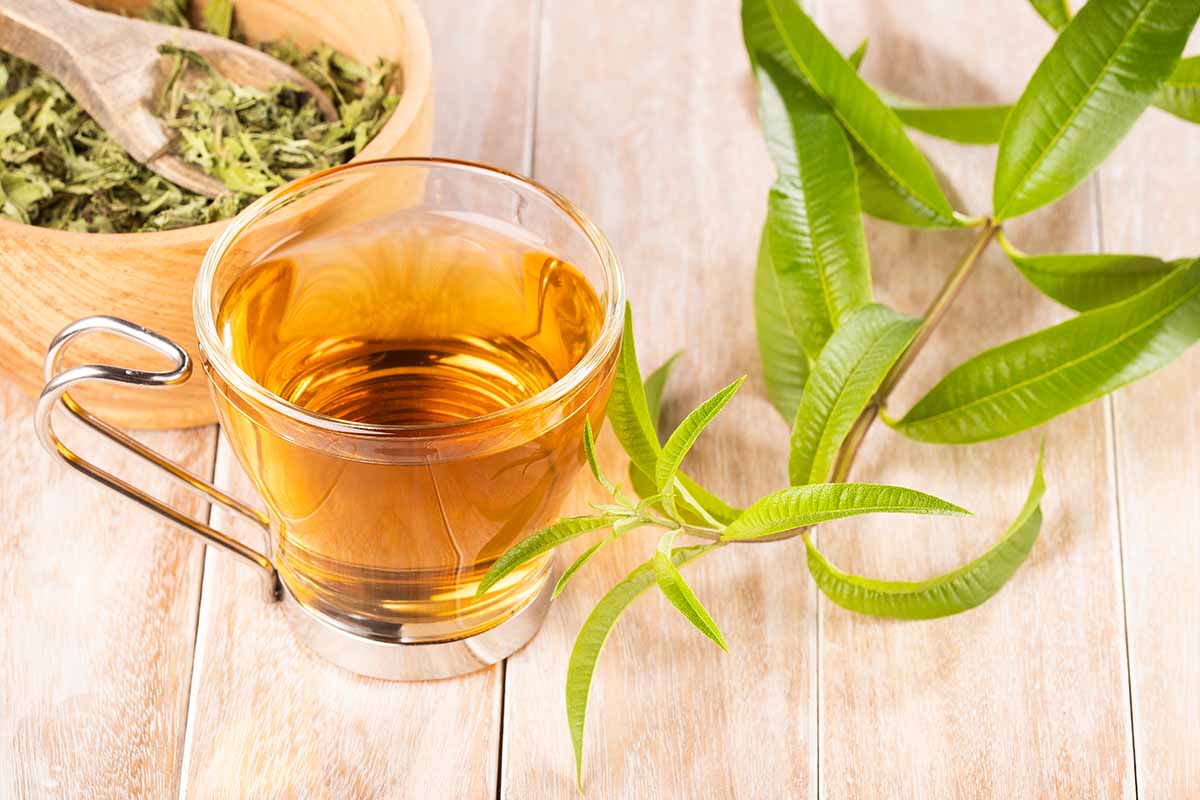
Using the measurements and preparations outlined above, you can have fun with new flavors by adding complementary natural ingredients. Get creative and make your own blends with other herbal aromatics and edible blooms!
Let us know if you make this tea or your craft your own blend by commenting below.
And if you enjoyed this guide, here are a few more articles for you to read next that also highlight healing herbs:
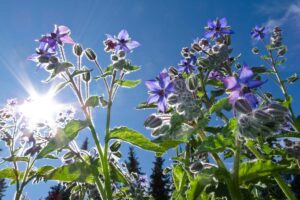
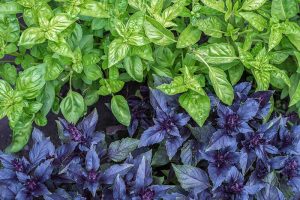
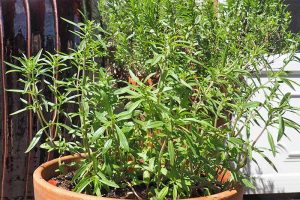
I really enjoyed reading this article. Thank you, Kat.
I’m sipping on a warm cup of this tea right now!
I just got my lemon verbena plant from Farmer’s Market. I’m excited to try this tea!
Thanks for sharing, Prajakta, I hope you enjoy the tea!